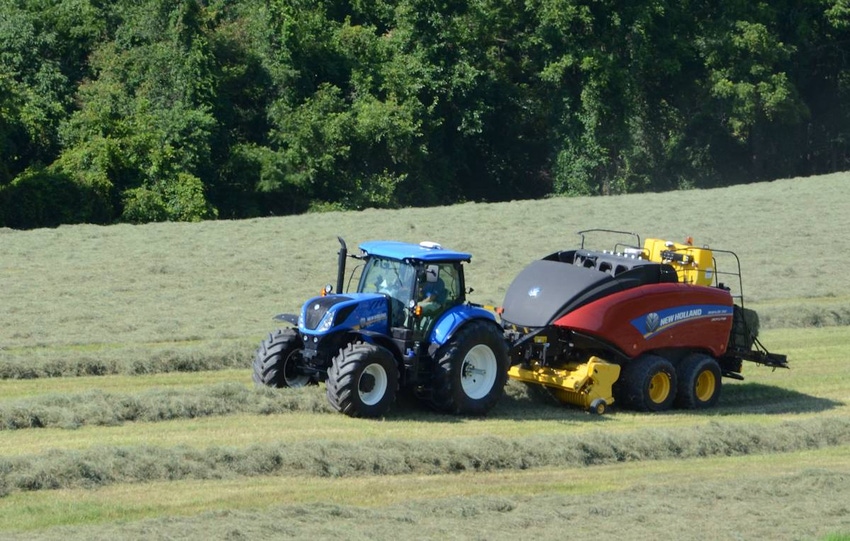July 27, 2015

Recently I generated a gallery from a New Holland event that attempted to share a wide range of new machines the company was bringing to market for Model Year 2016. There was one innovation I got a closer look at that opened my eyes to some big potential for future tractor/implement interaction.
For several years now equipment makers have been offering ISOBUS connections between tractor and implement. That connection, with the right software, allows the operator to control a machine from the cab. It's how you change the density on a bale, or alter sprayer settings using the onboard monitor. It's great tech because in the most advanced tractors you use a single monitor to manage implements. Pretty cool stuff.
Then at this New Holland event I got a look at ISOBUS Class 3 - a system New Holland is calling IntelliCruise. This is next-level - and optional - tech the company is offering for 2016. It's just coming out and in fact New Holland has released a preliminary version of ISOBUS 3 since the Ag Electronics Foundation is still finalizing the standard. Yet the promise of this next-level tractor-implement connection was interesting to watch.
With ISOBUS 3 the implement not only provides information to the tractor, but can actually control the tractor based on implement-driven factors. New Holland showed it off in a Bigbaler 340 on a beautiful hay-making day near Hershey, Penn.
Sitting in the cab of a T7 tractor I got a look at the technology up close. Basically through the control you tell the baler the maximum speed it can drive the tractor. That's an upper limit, but the operator sets the speed range on the tractor's CVT, which can be lower than the baler's "top speed."
That way the operator retains control based on the type of field.
Then we were off. The windrow in this field wasn't too massive, we aren't talking one of those California fields where someone pulled a windrow merger through to bring hay into fewer windrows. But it was a solid-yielding grass/alfalfa hay field. And New Holland's Bigbaler 340 wasn't pushed to its limit, yet I did get a great demo of the tech.
The baler "knows" its capacity for product based on material enters the machine. Using that information the baler then tells the tractor optimum speed. As we road along, I had the operator (I was in the training seat) push up the tractor's top speed on the CVT (closer to what was set on the baler). As the material thinned out in one area, we sped up. Hitting a bigger slug of hay slowed the machine right down.
The key benefit? Your best baler operator can speed up and slow down pretty well through a field, but never underestimate the power of that "miracle marriage" between computer and machine. The baler can issue instructions to the tractor, and the tractor can respond, far faster than a human. In essence, your best baler operator would become better. Yet in these days of farm labor shortages and inexperienced operators, this tech would really shine.
Essentially a newbie operator would almost bale like a pro as the machines do the talking and the operator steers.
Moving to the future
Of course, this is just the first implementation of ISOBUS 3 for New Holland. They're working on other options, perhaps a round baler with similar connectivity. And consider what this kind of machine-to-machine communication might mean for the accuracy of pull-type sprayers (with pulse-width modulation) or planters.
Even smart tillage equipment might speed up or slow a tractor based on changing soil types, which improves performance and maximizes every machine.
Sure you can talk about cloud data (and we do) and managing information, but on-machine enhancements like ISOBUS 3 could make a big difference too. We'll keep watching.
You May Also Like




